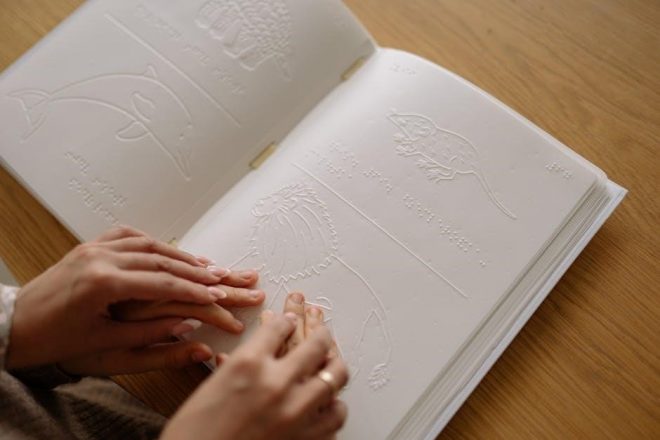Guiding questions are thought-provoking inquiries designed to direct exploration, foster critical thinking, and deepen understanding of a topic, serving as foundational tools in education and inquiry-based learning.
Definition and Importance of Guiding Questions
Guiding questions are carefully crafted inquiries designed to direct learning, stimulate critical thinking, and encourage deeper exploration of a topic. They are essential in education as they help students focus on key concepts and connections. These questions are open-ended, prompting learners to analyze, evaluate, and synthesize information rather than recall facts. Their importance lies in fostering active learning, promoting engagement, and guiding learners toward meaningful understanding. By framing the boundaries of a discussion or investigation, guiding questions ensure that students stay on track while exploring complex ideas. They also serve as tools for teachers to assess comprehension and encourage reflective thinking, making them a cornerstone of effective pedagogy.

Types of Guiding Questions
Guiding questions vary in form and purpose, including critical questions that require judgment, open-ended questions for exploration, and focused questions for specific insights, each serving distinct educational goals.
Critical Guiding Questions
Critical guiding questions require students to analyze information, evaluate evidence, and form well-supported judgments. These questions often prompt learners to compare, contrast, or solve complex problems. For example, in a historical context, a critical question might ask, “What were the primary causes of the Civil War?” This encourages students to think deeply and consider multiple perspectives. In leadership development, a question like, “How would you handle a team conflict?” challenges individuals to apply ethical reasoning. Such questions are designed to develop analytical skills and encourage independent thinking, preparing students for real-world decision-making. They are essential for fostering a deeper understanding of subject matter and promoting intellectual growth.
Open-Ended vs. Focused Guiding Questions
Open-ended guiding questions encourage broad exploration and diverse responses, allowing for creative and critical thinking. They cannot be answered with a simple “yes” or “no.” For example, “How do visual elements and text contribute to this exploration of the film industry?” invites multiple interpretations. In contrast, focused guiding questions are specific and direct, targeting particular aspects of a topic. For instance, “What were the main causes of the Civil War?” guides students to specific points. Open-ended questions foster curiosity and engagement, while focused questions ensure clarity and alignment with learning objectives. Both types are valuable, but they serve different purposes in education. Using them strategically enhances understanding and promotes critical thinking.
Creating Effective Guiding Questions
Crafting effective guiding questions involves clustering diverse inquiries and using tools like Sentence-BERT to ensure relevance. This approach sparks engagement and aligns with learning goals.
Question Clustering and Diversity
Question clustering involves organizing inquiries to cover diverse angles of a topic, ensuring comprehensive exploration. Using techniques like Sentence-BERT, questions are embedded and clustered via k-means to prioritize diversity. This method sorts questions by their distance to cluster centers, fostering varied perspectives. For example, clustering helps identify how visual elements and text contribute to exploring the film industry or how a writer structures an article. By grouping questions strategically, educators can address multiple aspects of a subject, promoting deeper understanding and engagement. This approach ensures that guiding questions spark curiosity and cover a wide range of ideas, making learning more dynamic and inclusive. Clustering also helps avoid redundancy, keeping discussions focused and productive.
Tips for Crafting Clear and Relevant Questions
Crafting effective guiding questions requires clarity and relevance to the topic. Start by ensuring questions are specific and focused, avoiding ambiguity. Use simple language to make them accessible, especially for students. Align questions with learning objectives to maintain purpose. Encourage critical thinking by incorporating judgment-based inquiries. For instance, instead of asking “What happened?” ask “Why did this happen and what were the consequences?” Additionally, ensure questions are measurable and actionable, allowing for concrete answers. Avoid leading or biased questions to maintain neutrality. Providing examples, like asking about the impact of inventions in history, helps illustrate the process. Regularly reviewing and refining questions ensures they remain effective and engaging, fostering meaningful discussions and deeper understanding.

Examples of Guiding Questions
Guiding questions include inquiries like, “What invention had the greatest impact on the Civil War?” or “How did non-military factors influence the war’s outcome?”
Guiding Questions in Educational Settings
Guiding questions in education are designed to stimulate critical thinking and engagement. Examples include: “What invention had the greatest impact on the Civil War?” or “How did non-military factors influence the war’s outcome?” These questions encourage students to explore historical events deeply. In literature, questions like “How does the writer structure this article to convey their message?” prompt analysis of textual strategies. In science, inquiries such as “How do visual elements and text contribute to this exploration of the film industry?” help students connect different forms of media. Such questions foster a deeper understanding of topics and promote active participation in learning, aligning with educational objectives to enhance comprehension and retention.
Guiding Questions for Leadership Development
Guiding questions for leadership development are designed to inspire reflection and growth in individuals. Examples include: “Throughout your career, how would peers, supervisors, or parents describe your leadership style?” or “Describe a challenging professional situation and how you handled it.” These questions encourage leaders to evaluate their decision-making processes and communication strategies. They also prompt self-assessment, such as “What strengths do you bring to a team, and how can you leverage them?” or “How do you approach feedback to improve your leadership?” Such inquiries help individuals identify areas for improvement and foster a mindset of continuous learning, essential for effective leadership in various contexts.
Guiding Questions in Creative Writing
Guiding questions in creative writing help authors explore themes, characters, and narratives. Examples include: “How do visual elements and text contribute to this exploration of the film industry?” or “How does the writer structure this article to convey their message?” These questions encourage writers to think deeply about their craft. They also prompt reflection on character development, such as “What motivates your protagonist?” or “How does the setting influence the plot?” Additionally, questions like “How can you reformulate this sentence to use Passive Voice?” aid in refining language. Such inquiries spark creativity, helping writers craft unique stories and develop cohesive narratives, essential for engaging readers and conveying meaningful ideas.
Purpose of Guiding Questions
Guiding questions encourage critical thinking, enhance comprehension, and promote meaningful interaction by focusing learners on key concepts and fostering deeper exploration of topics.
Encouraging Critical Thinking and Analysis
Guiding questions stimulate critical thinking by prompting learners to analyze information, evaluate evidence, and form well-supported conclusions. They encourage the exploration of multiple perspectives, helping students develop a deeper understanding of complex topics. For example, questions like “How does the author’s use of imagery influence the narrative?” or “What are the implications of this historical event?” require students to engage actively with the material. Such questions not only enhance analytical skills but also prepare students to approach problems methodically and think independently. By fostering a sense of curiosity, guiding questions create an environment where learners are motivated to question, reflect, and explore.
Improving Comprehension and Retention
Guiding questions play a vital role in enhancing comprehension and retention by focusing learners on key concepts and relationships. They help students organize information, making it easier to recall and apply knowledge. For instance, questions like “What are the main causes of the Civil War?” or “How does photosynthesis affect the environment?” guide students to identify essential details and understand their relevance. By engaging with these questions, learners develop a structured mental framework, which improves their ability to retain and retrieve information effectively. Regular use of guiding questions ensures that students grasp and remember critical content, reinforcing long-term learning outcomes and academic success.
Promoting Student-Teacher Interaction
Guiding questions foster meaningful dialogue between students and teachers, creating an engaging and interactive learning environment. They encourage students to express their thoughts and seek clarification, while teachers gain insights into their understanding. For example, questions like “What challenges did you face during this project?” or “How does this concept relate to real-life situations?” prompt students to share their experiences and perspectives. This exchange not only clarifies doubts but also builds rapport, making learning collaborative and inclusive. By incorporating guiding questions, educators can facilitate discussions that deepen understanding, address individual needs, and strengthen the teacher-student relationship, ultimately enhancing the overall educational experience and fostering a culture of active participation and mutual respect.
Common Pitfalls to Avoid
Common pitfalls include asking leading or biased questions, which can mislead students. Framing questions neutrally ensures objective exploration and unbiased responses.
How to Avoid Leading or Biased Questions
To craft neutral questions, focus on factual or open-ended inquiries. Avoid language that suggests a preferred answer. For example, instead of asking, “Don’t you agree that…”, frame it as, “What are your thoughts on…”. This approach encourages unbiased responses and promotes critical thinking. Additionally, ensure questions are clear and specific, avoiding ambiguous phrasing. Regularly review questions for any unintended implications. By maintaining objectivity, educators can foster an environment where students feel comfortable exploring diverse perspectives without feeling swayed toward a particular viewpoint.
Ensuring Questions Are Measurable and Actionable
For questions to be effective, they must be clear, specific, and aligned with desired outcomes. Use action verbs like “analyze,” “evaluate,” or “design” to guide student tasks. Ensure questions can be assessed through observable criteria. For instance, asking “How does the theme of friendship develop in the novel?” allows for measurable analysis. Avoid vague inquiries like “What do you think about the story?” which lack focus. By structuring questions to prompt tangible responses, educators can better evaluate understanding and provide targeted feedback, enhancing both teaching and learning experiences. This approach ensures questions drive meaningful engagement and measurable progress.

Best Practices for Using Guiding Questions
Effective use of guiding questions involves aligning them with learning objectives, encouraging critical thinking, and fostering engagement. They should be clear, focused, and adaptable to diverse learning needs.
Aligning Questions with Learning Objectives
Aligning guiding questions with learning objectives ensures clarity and focus in educational settings; By linking questions to specific outcomes, educators help students understand expectations and direct their efforts effectively. For example, if a lesson aims to explore the causes of the Civil War, a guiding question like “What were the primary factors leading to the Civil War?” aligns perfectly with this objective. This approach not only streamlines the learning process but also ensures that students grasp the core concepts. Additionally, such alignment aids in assessing whether the objectives have been met, making evaluation more straightforward and meaningful for both teachers and students.
Using Questions to Spark Curiosity and Engagement
Guiding questions are powerful tools for sparking curiosity and engagement, encouraging students to explore topics deeply. Open-ended inquiries like “What invention had the biggest effect in the Civil War?” or “How do visual elements contribute to exploring the film industry?” prompt critical thinking and creativity. These questions invite students to seek answers through investigation and discussion, fostering a sense of ownership in their learning. By framing questions that connect to real-world scenarios or personal experiences, educators can ignite interest and motivation. Such thought-provoking queries not only engage students but also encourage them to ask additional questions, driving a cycle of discovery and deeper understanding. This approach cultivates active participation and a love for learning;
